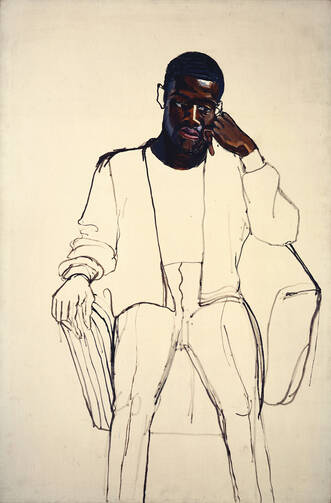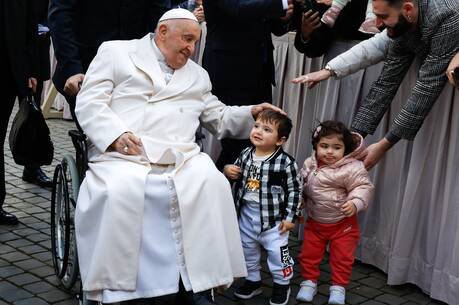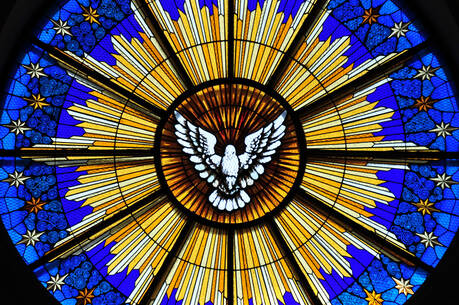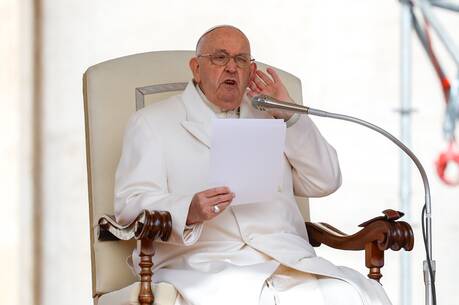With the opening of the Met Breuer in March, the Metropolitan Museum of Art in New York has made a major move into modern and contemporary art. But do not let the new building and all the hoopla around the opening cause you to miss the seismic change in thinking going on at the Met. The contemporary focus marks a deep shift, like the moving of tectonic plates under the Metropolitan, an institution whose vast holdings span 5,000 years.
For decades critics have complained about the museum’s neglect of contemporary art. But this past weakness is being transformed, step by step, into a future strength. Initial thanks for this development go primarily to Leonard A. Lauder, a businessman and lifelong arts patron, who in 2013 donated to the Met his world-class collection of Cubist works by Pablo Picasso, Georges Braque, Juan Gris and Fernand Léger, valued at $1 billion. When shown at the Met a year later, the Cubist collection earned very favorable reviews.
Meanwhile, Thomas Campbell, director at the Metropolitan, worked out a far-reaching plan. Not only would the Met build a new wing for contemporary art at its Fifth Avenue home, but it would also lease for eight years the former home of the Whitney Museum of American Art. The building at 945 Madison Avenue, a masterpiece of Brutalist architecture designed by Marcel Breuer, is an easy 10 minute walk from the Met. And New Yorkers already expect to see contemporary art there.
As Mr. Campbell puts it, the launch of the new Met Breuer (pronounced BROY-er) shows the Metropolitan “re-engaging with the art of our time.” Be advised that “Modern and contemporary” includes more than a century of art, from 1900 to the present.
On View
Two stunning inaugural exhibitions give visitors an eyeful and much to consider. “Unfinished: Thoughts Left Visible” shocks visitors unaccustomed to a new way of presenting the nearly 200 works on view. Fifteenth-century Renaissance masterpieces are shown seemingly out of order, beside or nearby 18th-, 19th- and 20th-century art. You see works by Titian, Bassano, Tintoretto, Jan Van Eyck and Albrecht Dürer, for example, in proximity to very different works by Peter Paul Rubens, Nicolas Poussin and Jacques-Louis David. Paintings by Vincent Van Gogh and the Impressionists are positioned close enough to be compared with works by Diego Velázquez, Alberto Giacometti, Ferdinand Hodler and Gustav Klimt, not to mention Alice Neel, Lucian Freud and Elizabeth Peyton. Pablo Picasso’s work is juxtaposed with that of other contemporary artists on the fourth floor. What startles, and is designed to educate, is the innovative organizing principle of unfinished work. This conceit encourages new arrangements of art never before shown together. It is a contemporary idea full of promise for new ways of seeing and appreciating art.
“Nasreen Mohamedi” (1937-90) is more predictable: works on paper by a relatively unknown modernist from India. While these include photographs and brightly colored drawings, a whole series of graphite grids predominates. The grids define space and give it an architecture. Some of Mohamedi’s lines point outward toward infinity, as if she were dividing the cosmos. One sees rhythm, movement and weaving patterns in the grids. Some reverberate, almost emitting sounds. Others resemble landscapes, aerial views of fields or miles of telephone wires. This is the first U.S. museum retrospective of Mohamedi’s work.
Future Directions
What would success look like at the Met Breuer? London’s Tate Museums, currently four institutions (Tate Britain, Tate Modern, Tate Liverpool and Tate St. Ives), offer one analogy. Sixteen years ago the Tate, London’s venerable museum of British art, opened a satellite for contemporary art, the Tate Modern, housed in a former electric power plant across the Thames River from St. Paul’s Cathedral. It was a gamble. The Tate Modern directors hoped for two million visitors that year. Instead, five million came. Since then the numbers have grown. The venue is popular and so are the exhibits. In June the Tate Modern will open a brand new building, its second expansion since 2000. This stunning success has been achieved without the Tate Modern’s having any permanent collection comparable to the Lauder Cubist gift to the Metropolitan.
What might the Met Breuer accomplish? Unlike the Tate Modern, the Met Breuer has competitors in contemporary art: the Museum of Modern Art, the Solomon R. Guggenheim and the Whitney. And unlike the area surrounding the Tate Modern at its launch, which was ripe for development as a funky new place to go in old London, the Upper East Side of Manhattan is a crowded, developed neighborhood. It is a gamble, but the potential of the Met Breuer is real.
According to Mr. Campbell and Sheena Wagstaff (who left her post as chief curator at the Tate Modern to chair the Met’s new department of modern and contemporary art), the Met Breuer plans to highlight diverse artists. It seeks to disrupt and expand the way the history of art is told.
The inaugural exhibitions further both goals, especially “Unfinished,” which moves beyond the linear chronology that typically governs exhibitions and treats art as a human exploration not bound by time or geography. Instead of ensconcing art in some institutional pantheon, both exhibitions give viewers tools to assess for themselves the value of contemporary art.
Kerry James Marshall, an African-American artist with a forthcoming solo show at the Met Breuer, was referring to the exhibition “Unfinished” when he said at the press preview, “My work appears alongside Leonardo’s.” He means DaVinci, of course. Marshall’s comment shows the value of rearranging works of art, for contemporary artists as well as for viewers.








